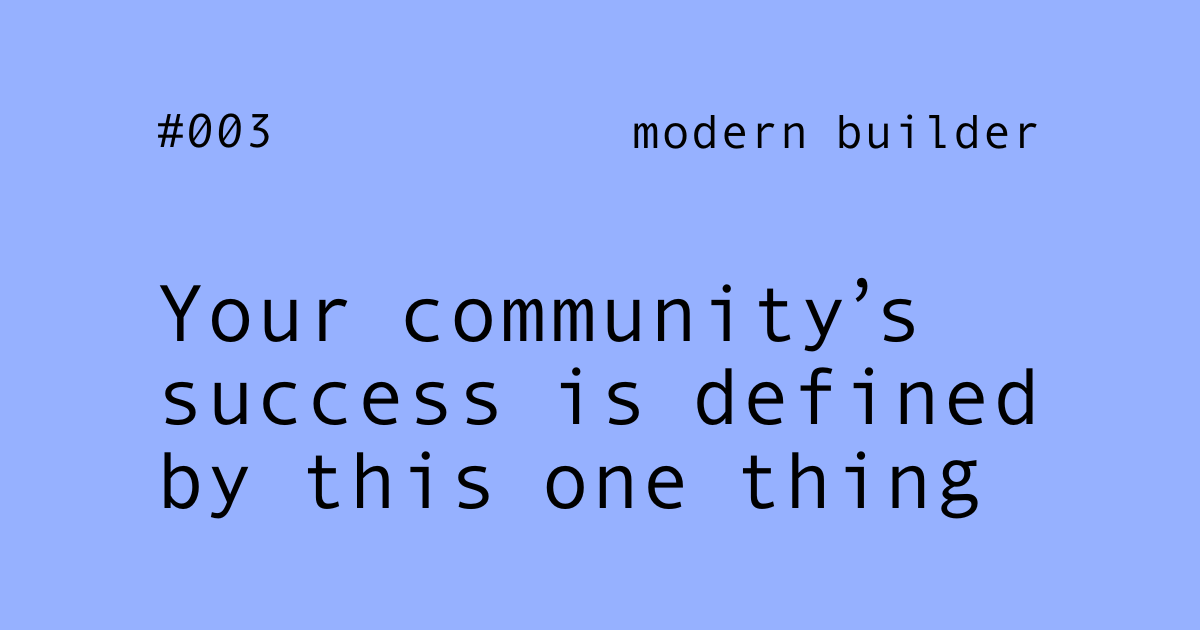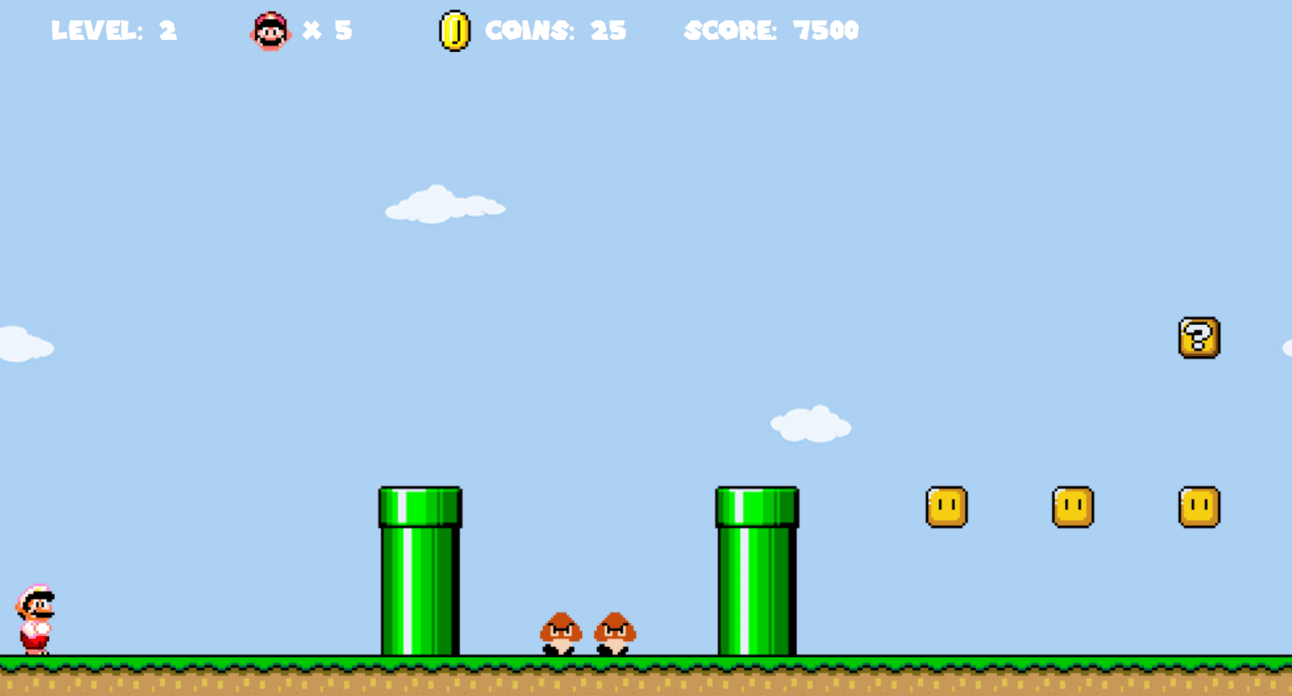- Modern Builder
- Posts
- Your community's success is defined by this one thing
Your community's success is defined by this one thing
Get the core interaction right

Happy Thursday!
I hope you’ve been well.
Excited to share this week’s edition of my newsletter with you.
We will be exploring the intersection of communities, platforms and core interactions.
In this article we will look into:
How communities are the next social platforms
How core interactions set the foundation of every community
The 3 elements to define your community’s core interaction
Let’s dive in!
Communities are new social platforms, determined by their core interactions
As a kid I wasn’t much of a gamer.
The only game I was obsessed with was a Browser Based Mario Jump & Run called Super Mario Run (and watching my brother play Diablo).

I would spend hours behind glued to my computer playing it.
My grandma never understood what the obsession was all about. “All you do is click some buttons all day. What do you get out of it?”
This statement shows how smart game design is. I may have wanted to save the princess or just collect as many points as possible, all I really did was press some buttons to jump and beat the evil turtles.
Essentially my big goal was broken down into a set of repeated actions. As long as I clicked that button at the right time, I would continue to get value out of the game.
It's the same with platforms. Whether you want to create the next big social platform or the largest travel marketplace, you’ve got to break it down into a set of repeated actions that users can perform.
It all comes down to simple steps (i.e. the core interaction) that anyone can do.
My thesis: The same is true for communities.
Communities are becoming the next social platforms - and their success is defined by their core interaction.
Communities are the new social platforms
I have talked about how brands are becoming platforms in the first edition of the Modern Builder newsletter.
But it’s not just brands that are experiencing a shift.
Communities are emerging as the new social platforms.
The bad news: The internet in its current form - dominated by Big Social - is broken.
The good news: The internet is slowly going back to the place where we congregate around commonalities. We’re moving away from Big Social and increasingly gathering in niche communities - ranging from communities sales professionals, for knitters and for film lovers.
People meet and exchange value in these new cozy internet homes.
It’s just a question of time when these communities will take the role of platforms: Becoming a space where members can create and share value, that is being consumed by consumers. And vice versa.
Think of a writer’s community, where writers share their work and get feedback for it.
The implication of this: they are not just becoming platforms but becoming social platforms.
One thing I learned early on when I was working on B2B platforms (something you always need to focus on when building a platform):
Defining the core interaction.
The core interaction
The core interaction is a set of actions that creators and consumers engage in repeatedly to get value out of your platform.
Looking at today’s social platforms: This is tweeting on Twitter (I meant on X), posting a video on Youtube, posting a visual on Instagram and letting followers consume that content.
The core interaction also connects individual user actions with the overall purpose of the platform. Youtube wants people to stay on their platform so will incentivize the creation of longer videos. The same is true for X where long form tweets have been pushed for the last few months to keep people on the app.
Let’s translate this for communities:
The core interaction is the fundamental exchange between community members that
drives value
fosters relationships
enhances the overall experience
These interactions are critical to the growth, sustainability, and success of the community.
Enough theory.
What does that mean for you?
Communities & core interaction: Implications for community builders
Here is some guidance:
1. When starting a community, focus your efforts on one type of interaction (→ core interaction) where value can be given or received.
This can be asking & answering questions, asking for & providing feedback, or celebrating achievements. It might even be minting an open edition on a regular basis.
The core interaction will depend on the type of community that you are building, and the goals that your members have. It is thus crucial to keep in mind who your ideal community member is.
One of my first communities was centered around women’s health - especially diet and fitness. Every Monday members could share their meal plan and would get feedback and encouragement. Later, we introduced a personal dietician putting together a personalized meal plan for every new member that joined.
This core interaction would bring people back to the community on a regular basis as it was completely aligned with their goals and the value they would want to get out of the community.
2. Build a positive feedback loop around the core interaction. The more you do that, the more value members will get.
To motivate core interactions, design your community so that members receive their first validation shortly after joining.
This facilitates a positive feedback loop: members derive value from their engagement and are motivated to participate more actively.
A friend of mine is part of a writing community. As soon as he joined it he could post one of his articles and received very extensive and helpful feedback - after only 24 hours. He got this first dopamine hit, which made it more likely he would return to the community.
Keep in mind: Value should be delivered in a way that fulfills the reason they joined. The more you remove friction around this interaction, the easier members will get that value out of the community.
How to define your core interaction?
There are three elements to defining the core interaction:
Core value unit: The central element that holds significance within a community
Core interaction: The key actions that facilitate the creation and consumption of the core value unit
Enabler: The community structure (channels, rituals, events, culture) that enables these actions
Core value unit
Ask yourself: What main value do you want members to give and receive? What is the unit of information (and content) being created in the community that defines value for its members?
Think of a community of designers. The core value unit is designs (that are being created and consumed).
Think of my community for women’s health. The core value unit is meal plans or fitness protocols (that are being created and consumed).
Core interaction
Ask yourself: What are the actions that enable the creation and consumption of that value?
For creation, it’s the simple act of sharing designs/meal plans/writing and asking for feedback.
For consumption, it’s the act of giving feedback on design/meal plan/writing etc.
Remember the X example: Instead of creating and sharing a tweet you would create and share a post around a design you made in a design community. And get feedback from it.
Enablers
Ask yourself: How can you encourage this core interaction? What structure can you create to enable this core interaction?
Here are some examples that can guide you:
Channels: Create specific channels to share design, meal plans or articles
Rituals: Host events or rituals to discuss best practices around creating designs, meal plans or write an article
Prompts: Create prompts to remind community members to join in on the action → “Show us your design magic!”
Norms: Each time you post a piece of work to be edited, you should, in turn, edit someone else’s work
Side note: Unlike rules, which are set top-down, norms arise bottom-up.
Getting the core interaction right is the most important part of community design, as the community will need its members to repeat this process over and over to generate and exchange value.
This fosters a sense of belonging, enhances overall community experience, and contributes to the growth and sustainability of the community.
So when thinking about your community or starting to build one, think about what core interaction you need to focus on that provides the most amount of value to members.
Obviously your community is not just defined by its core interaction. With time you can add other rituals and events to expand it. But it should provide you some guidance on what to focus on.
Because once you get the core interaction right, people will be naturally attracted to your community.
And that’s it for this week’s edition! Before we wrap up, I would love you to fill out this form to help me better understand what type of content & support you are looking for.
It takes less than 2 minutes. Appreciate you taking the time!
Also, please let me know what you think about today’s newsletter and help me improve. Just reply to this email. Would love to hear your feedback!
Enjoy your rest of the week,
Anna
Reply